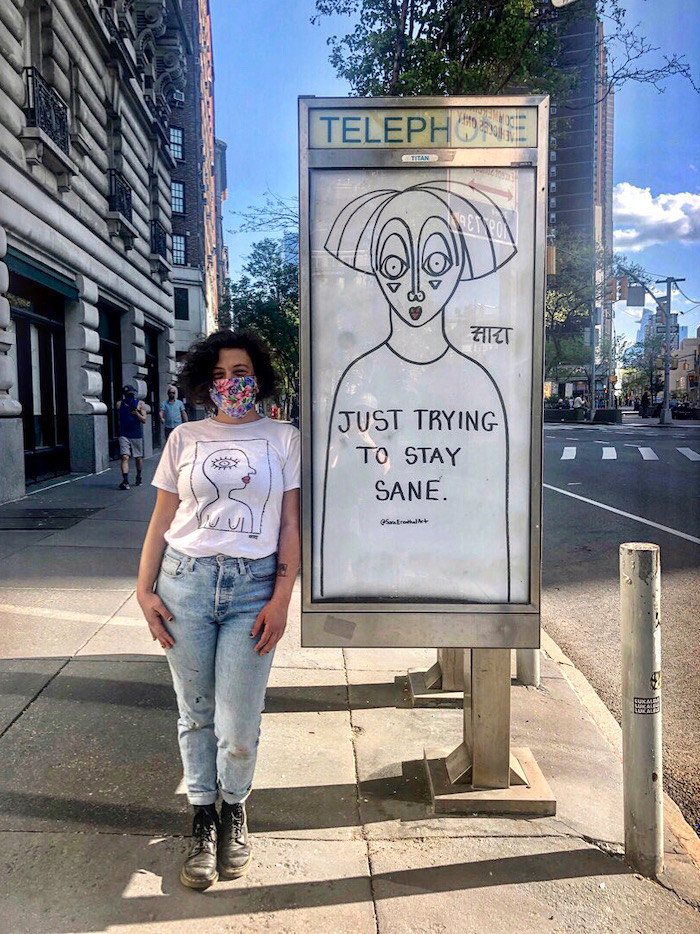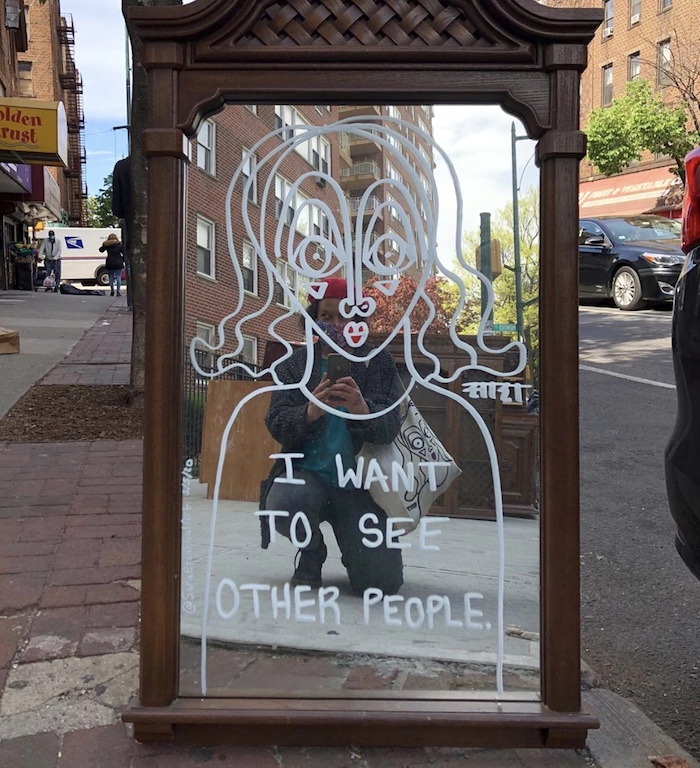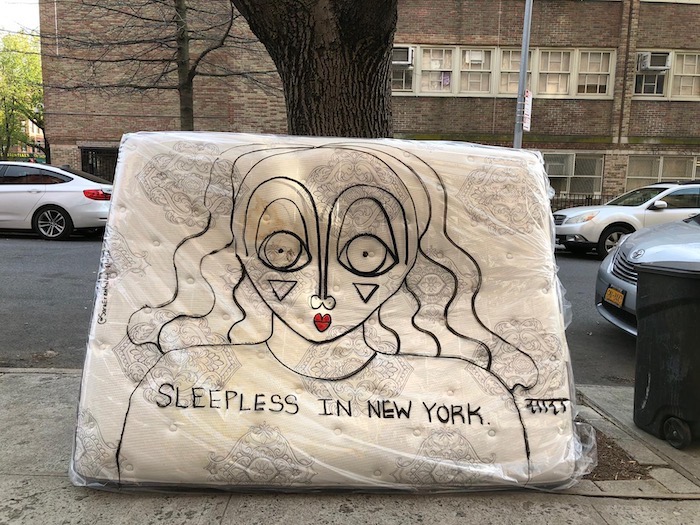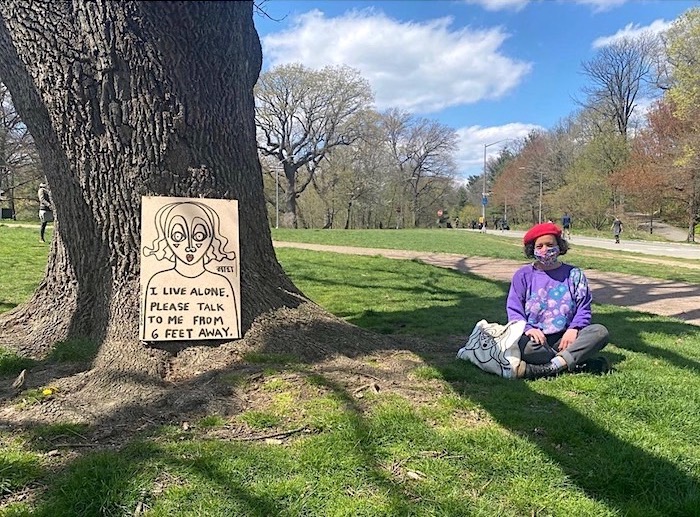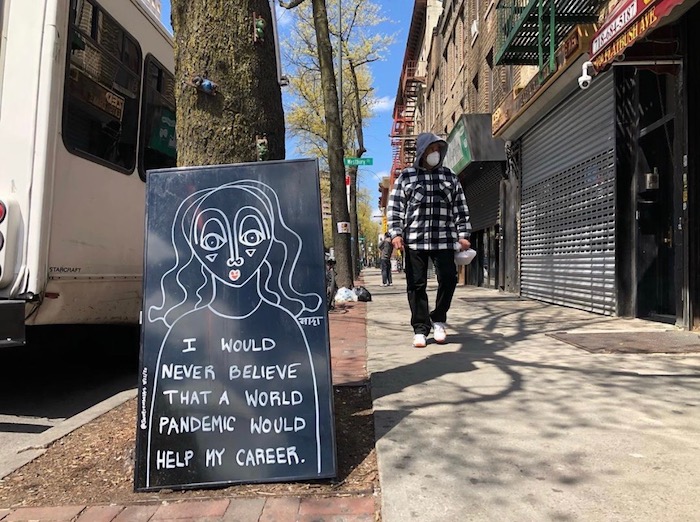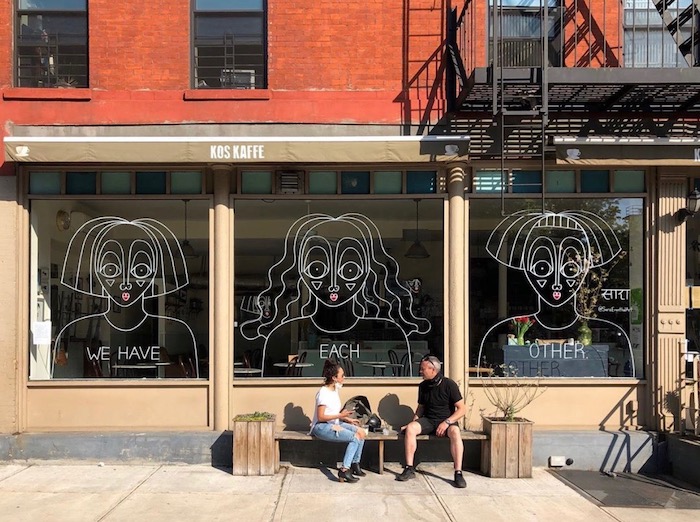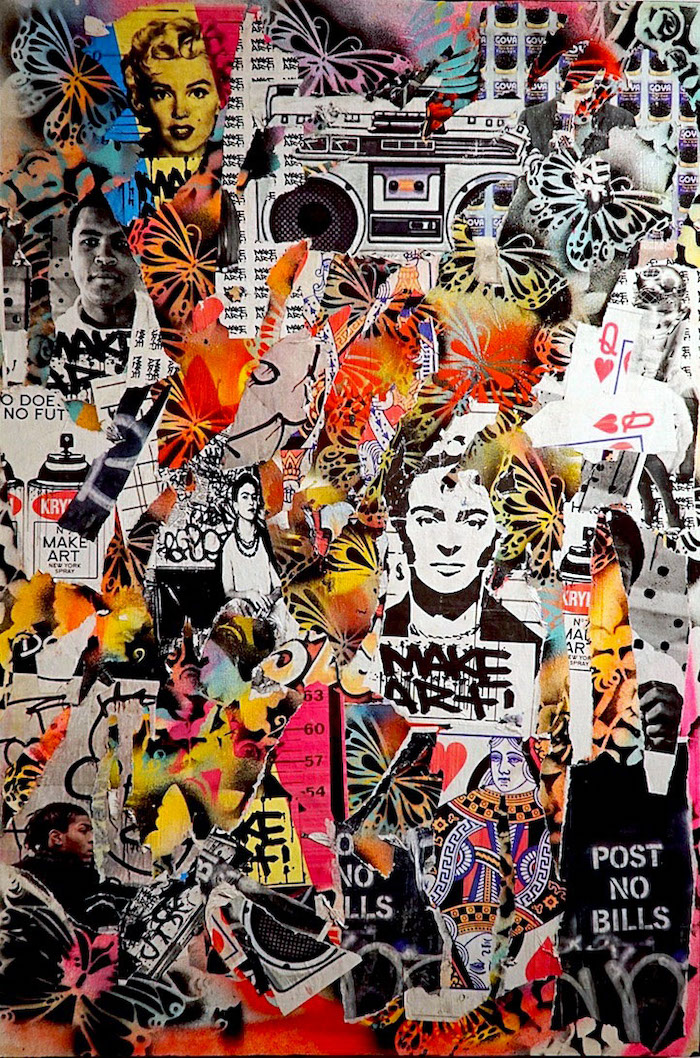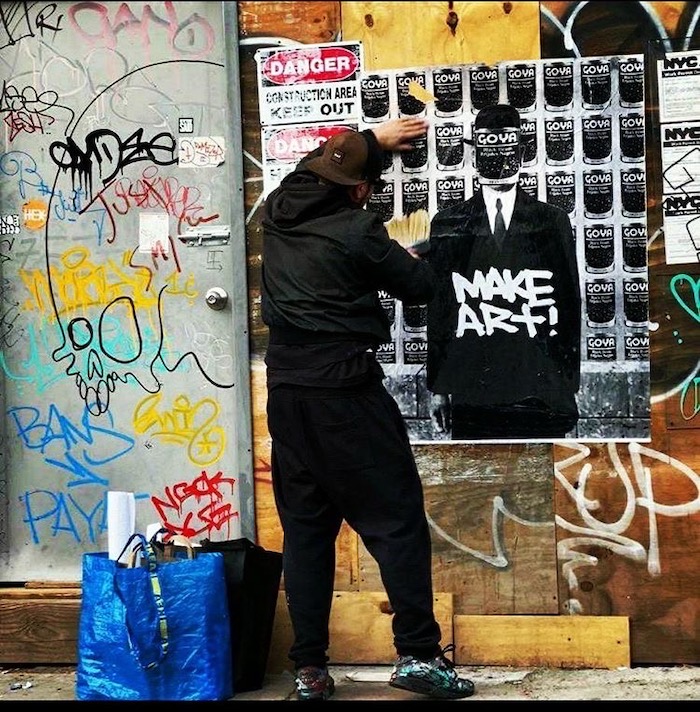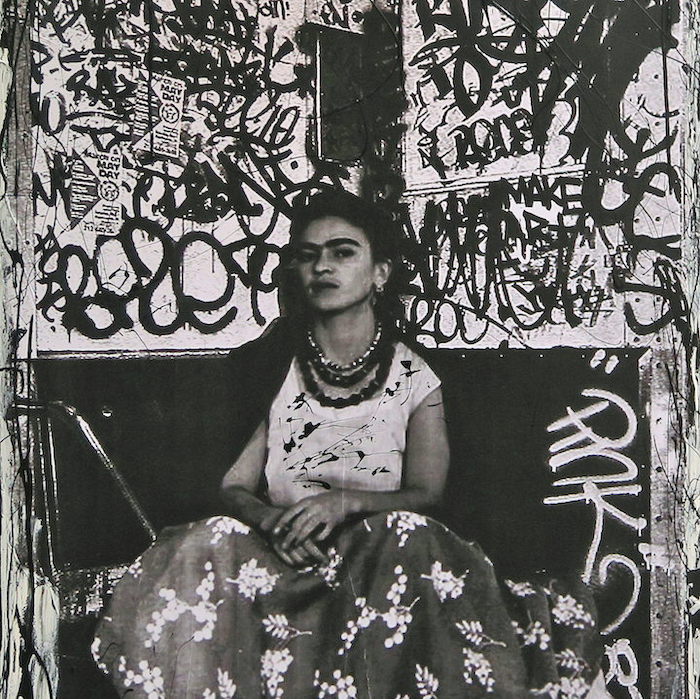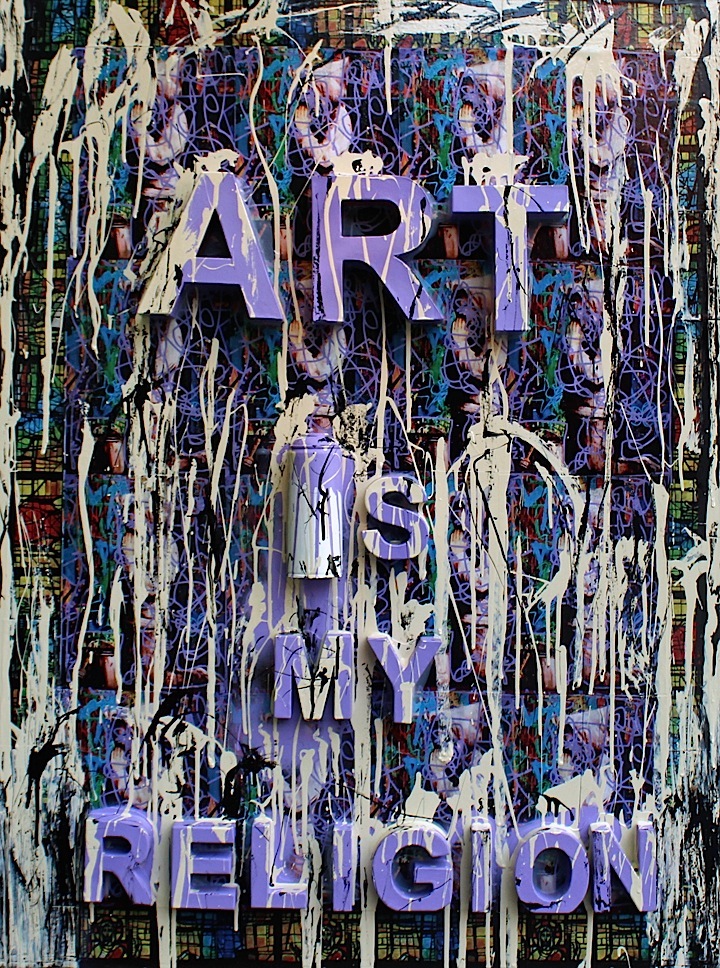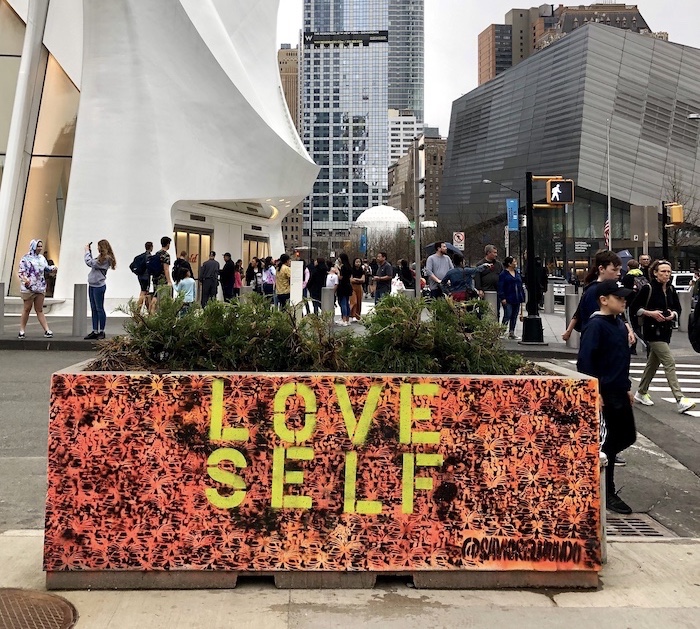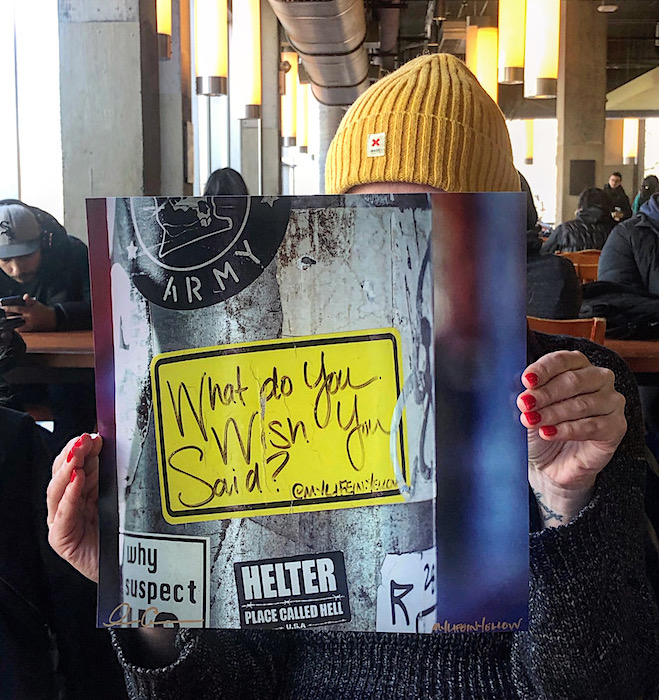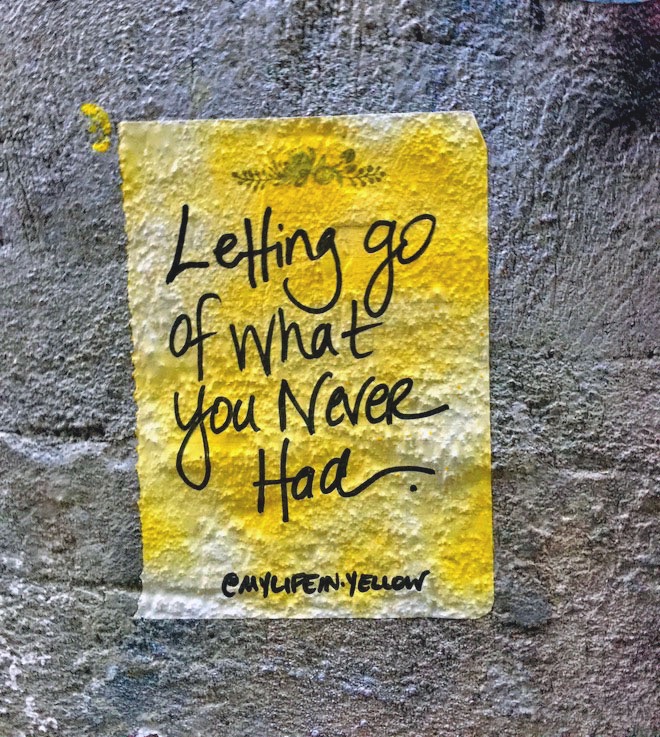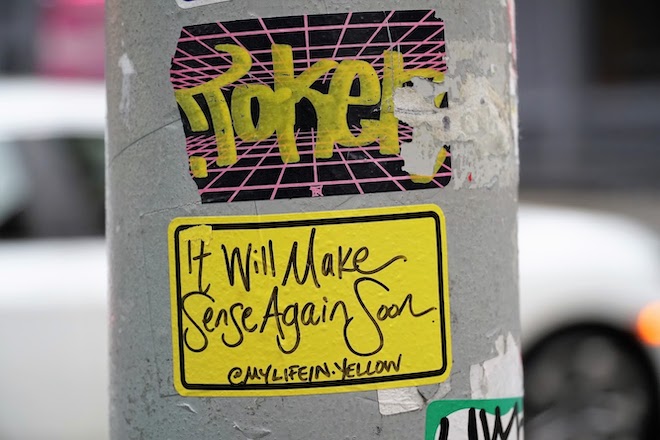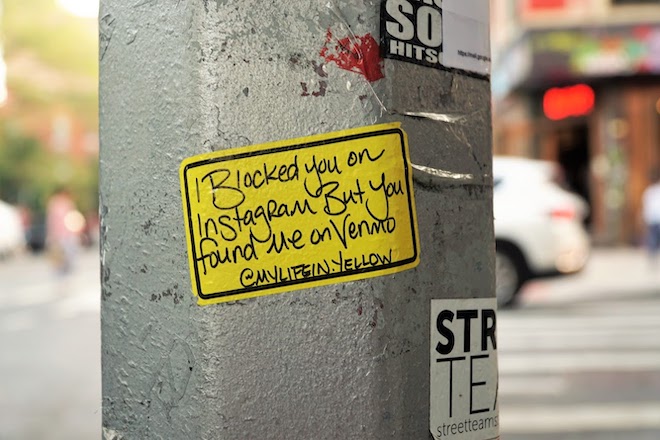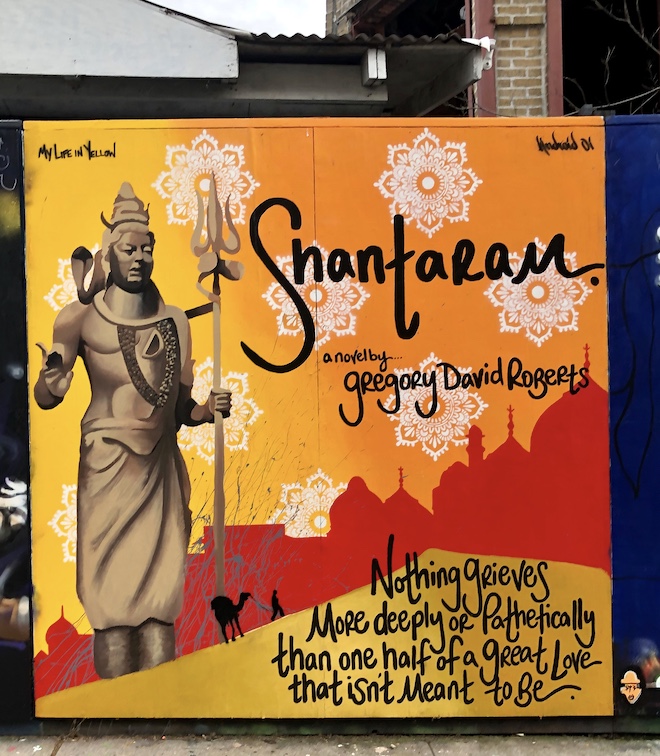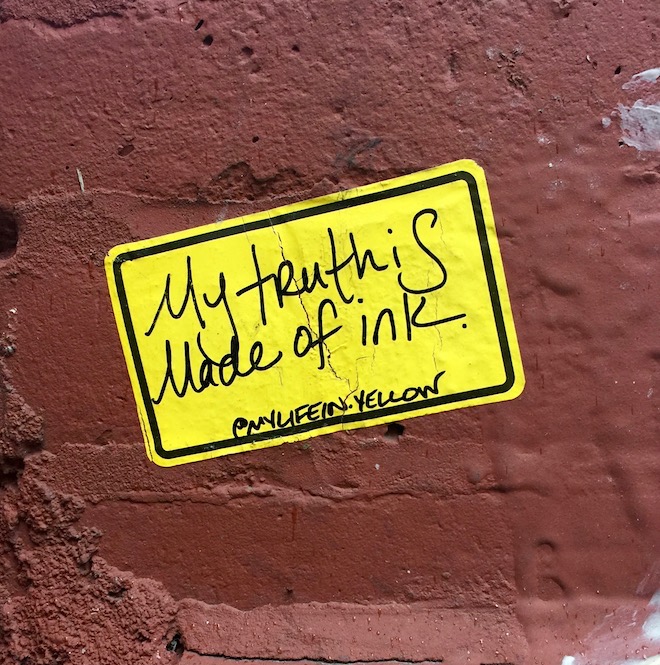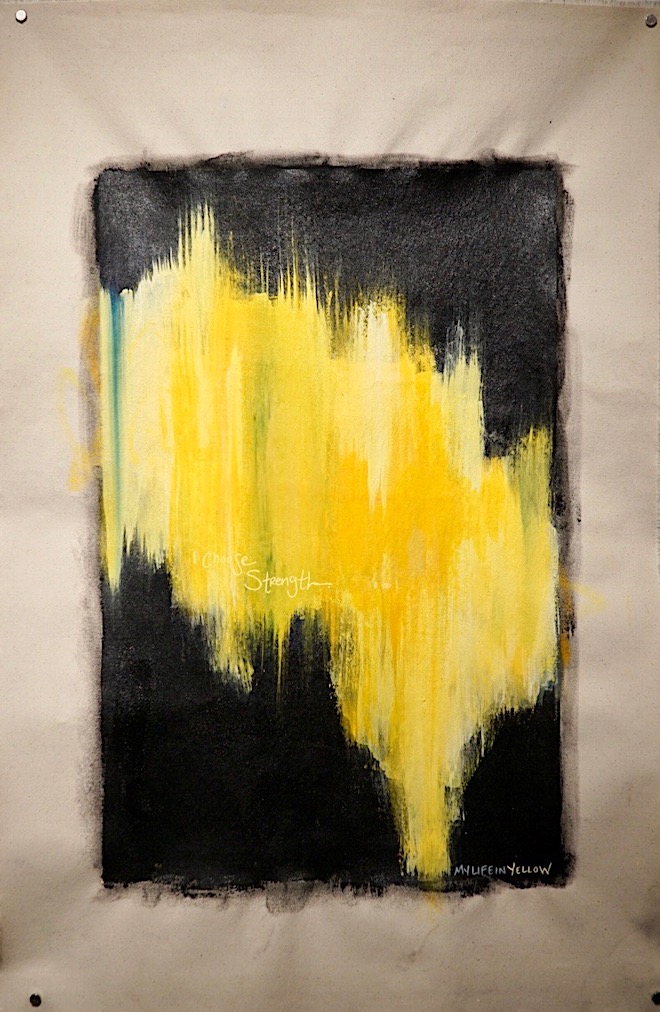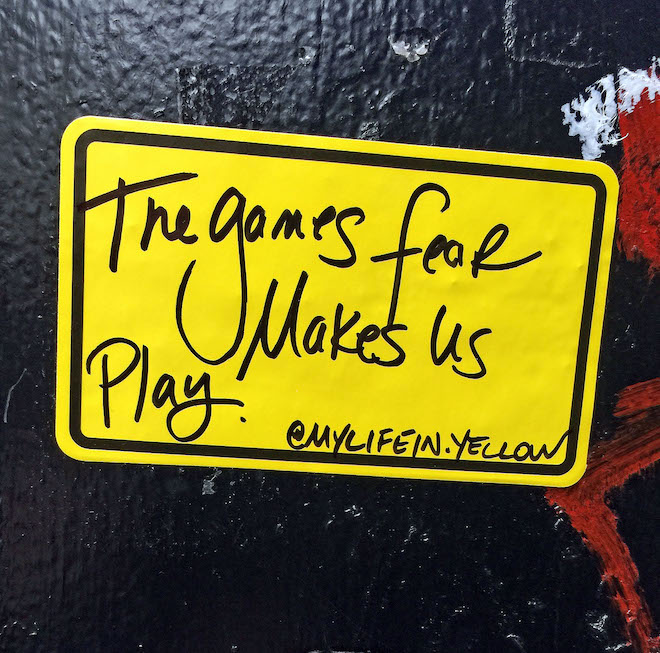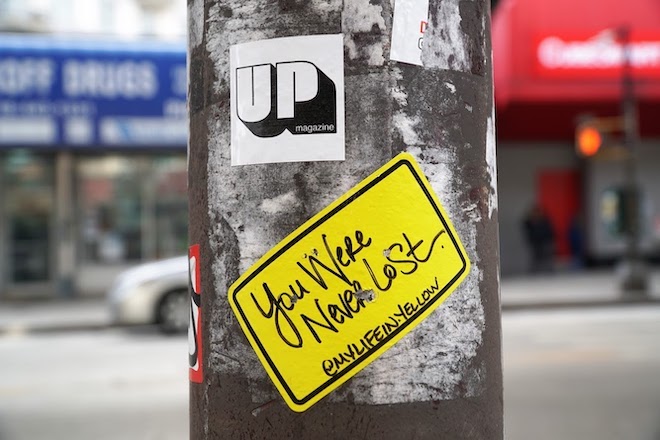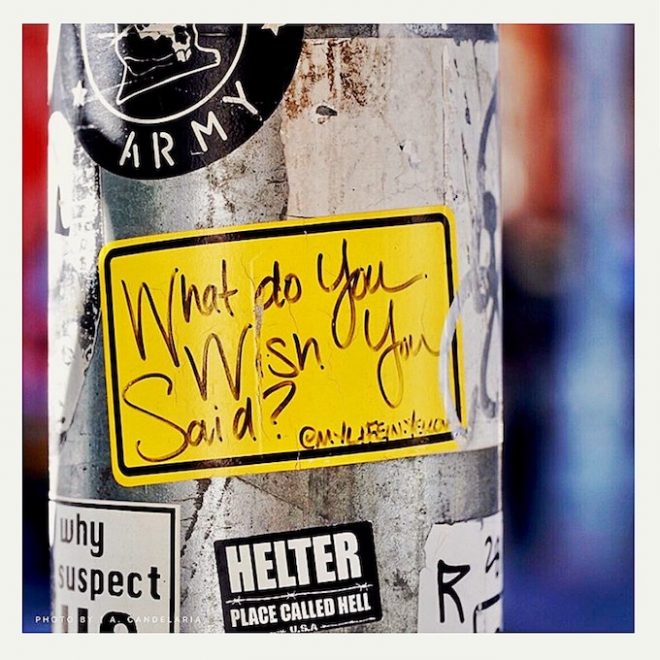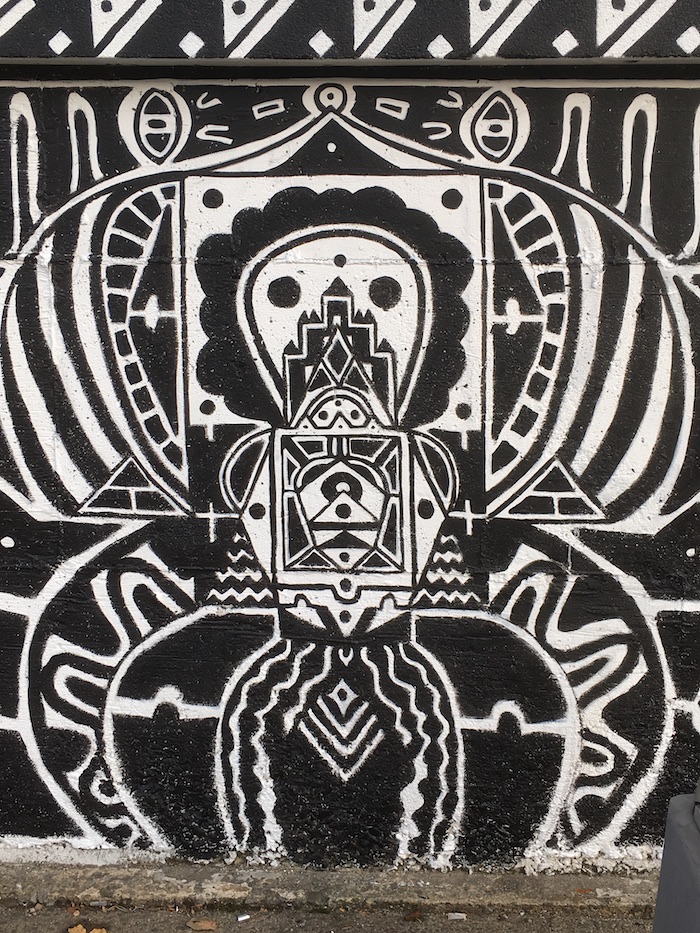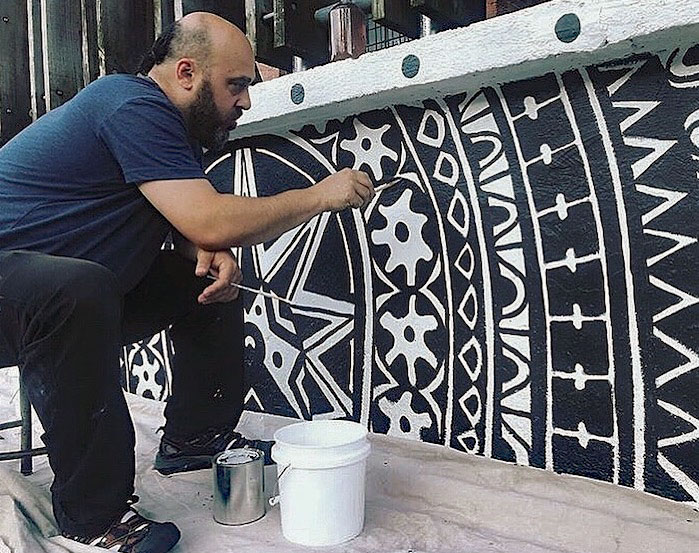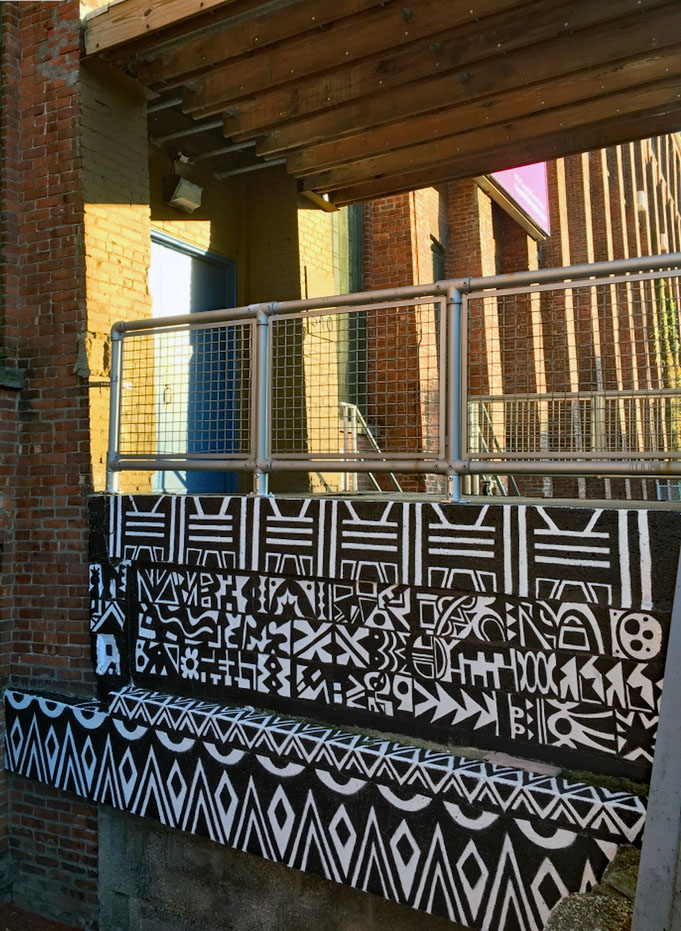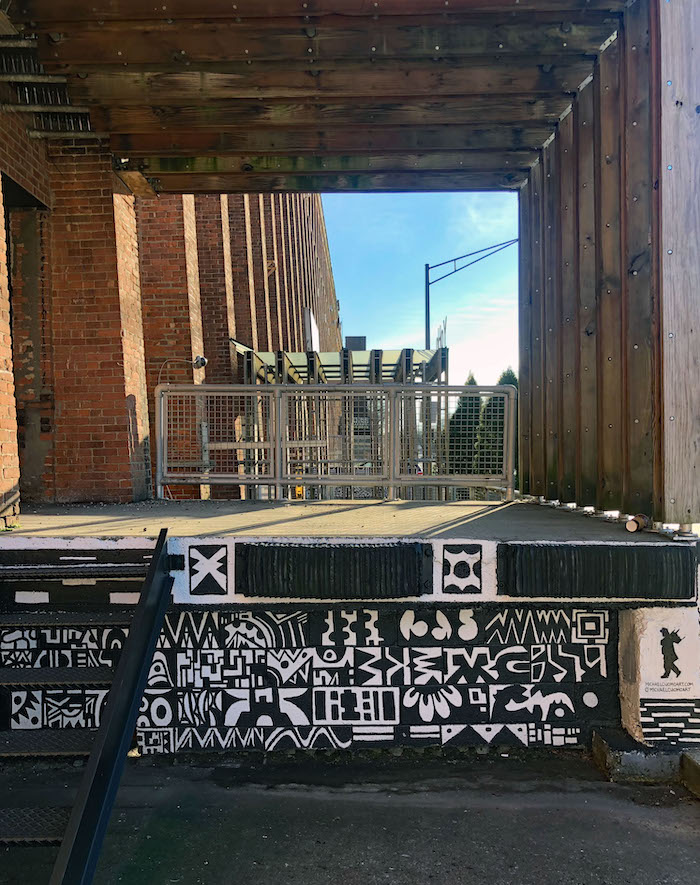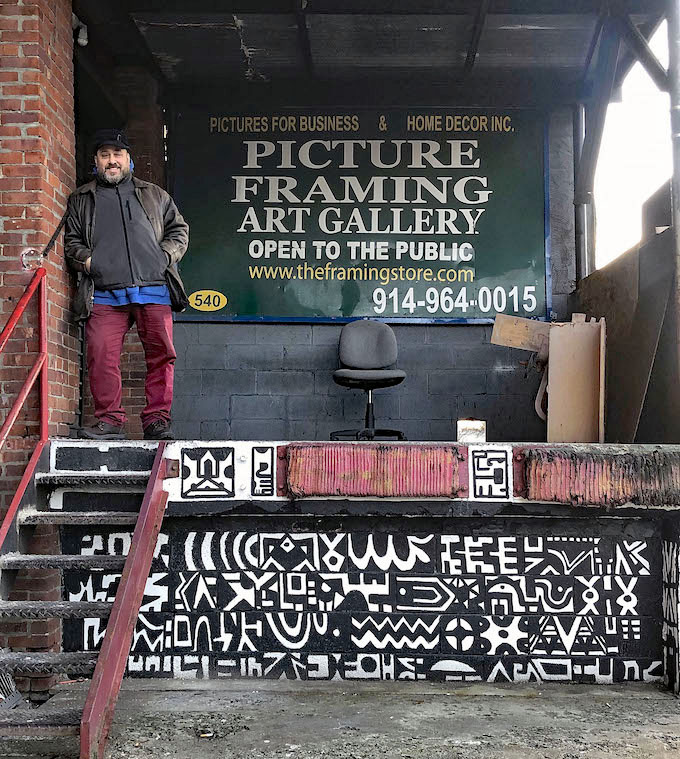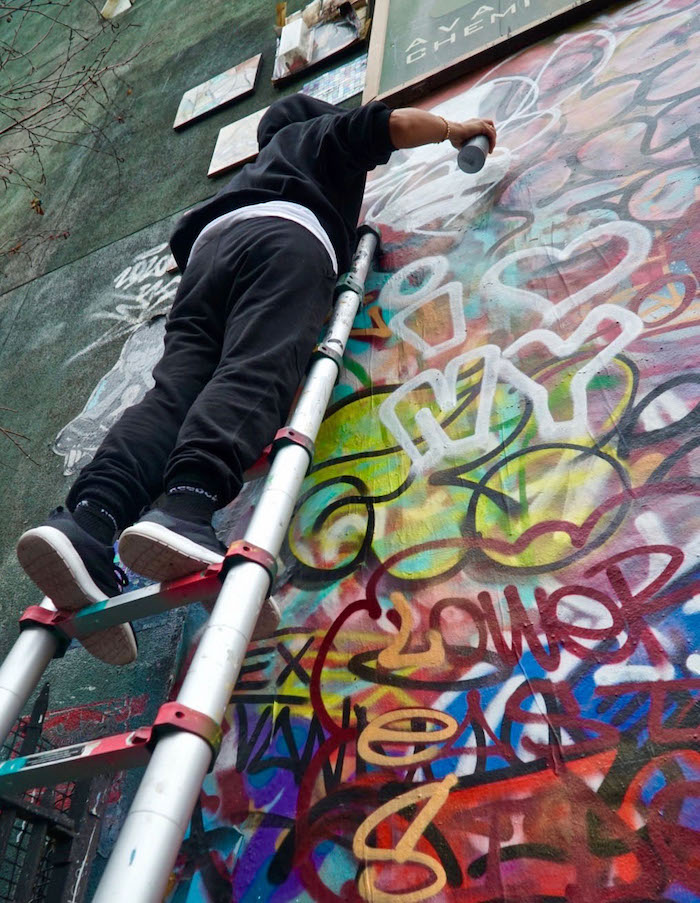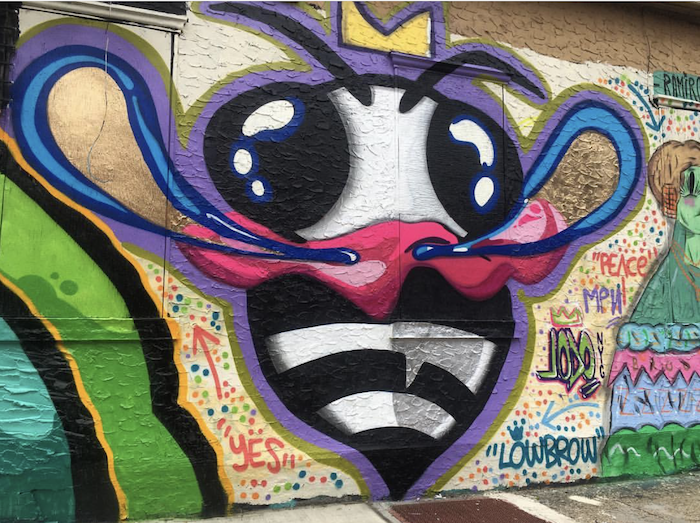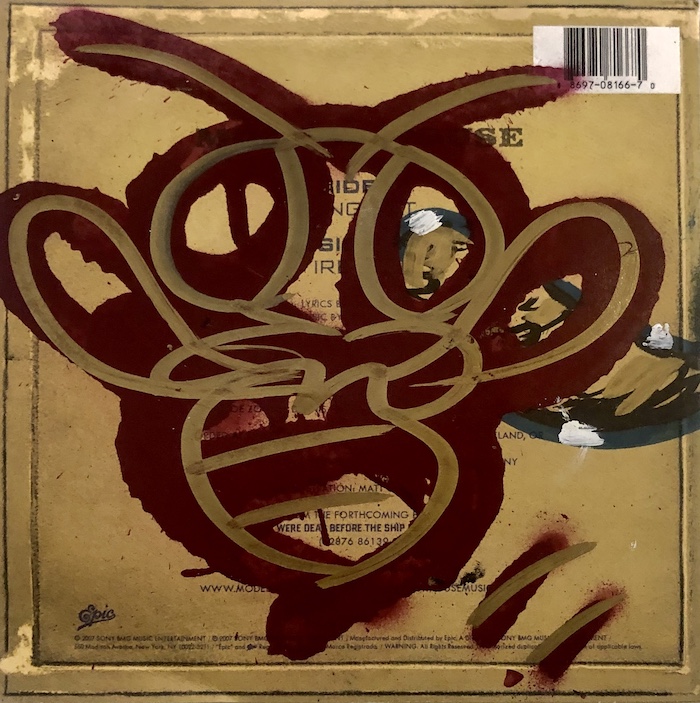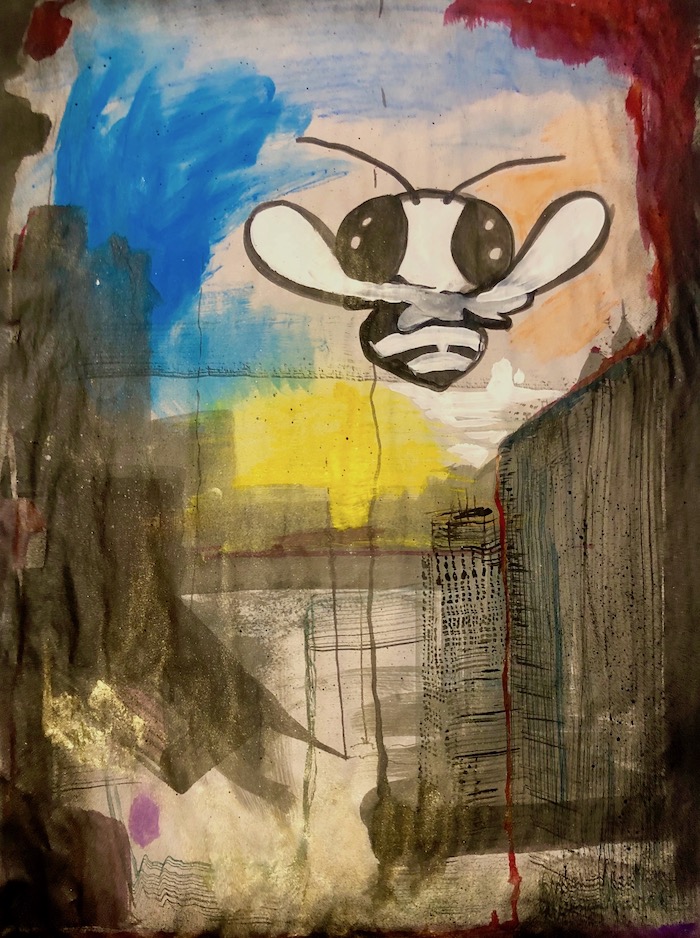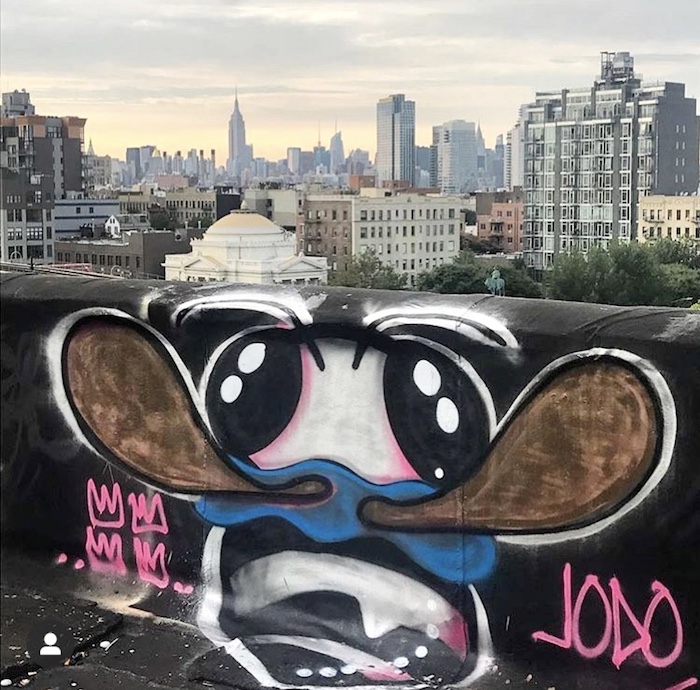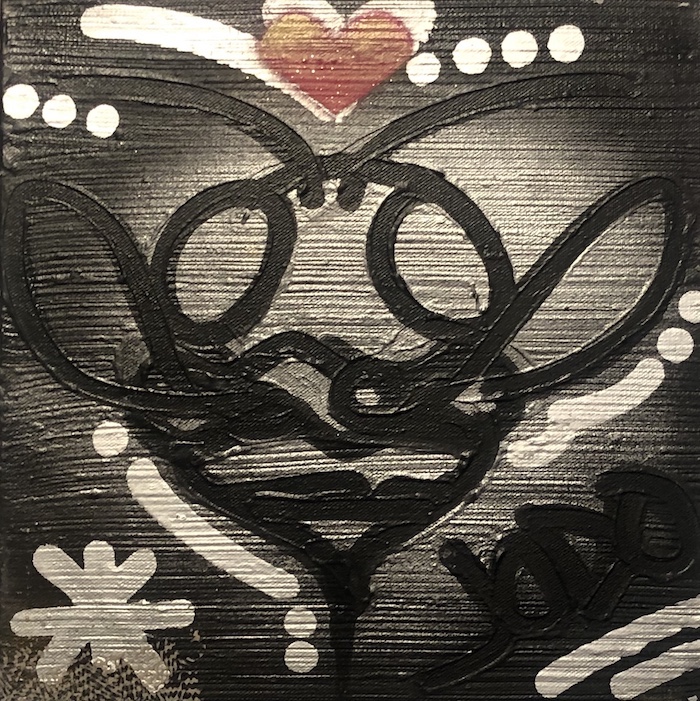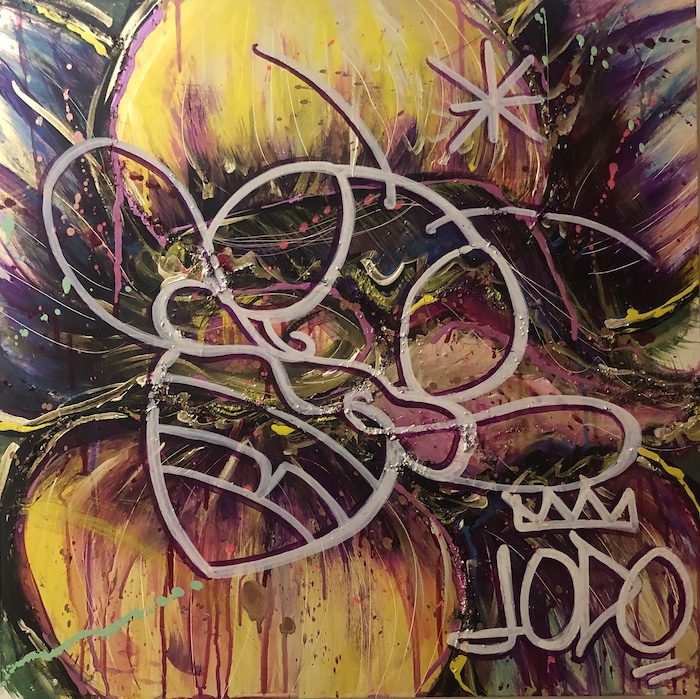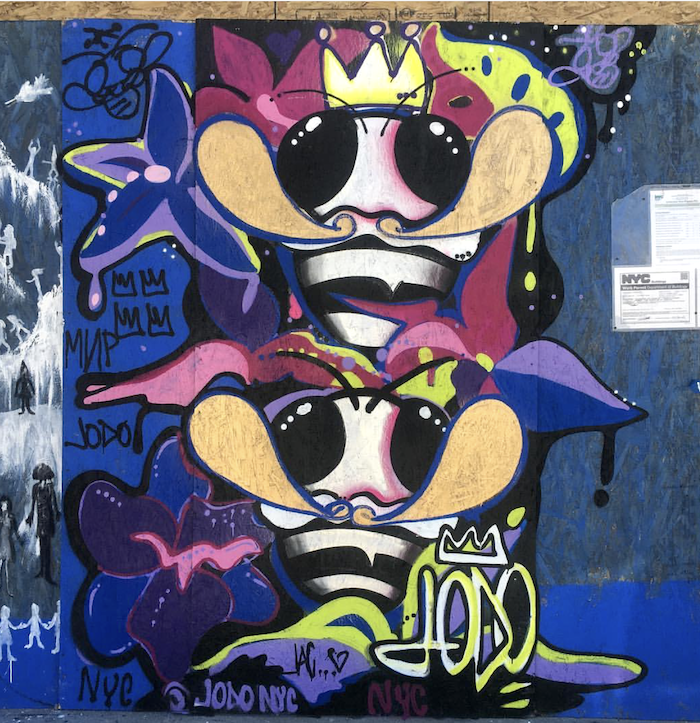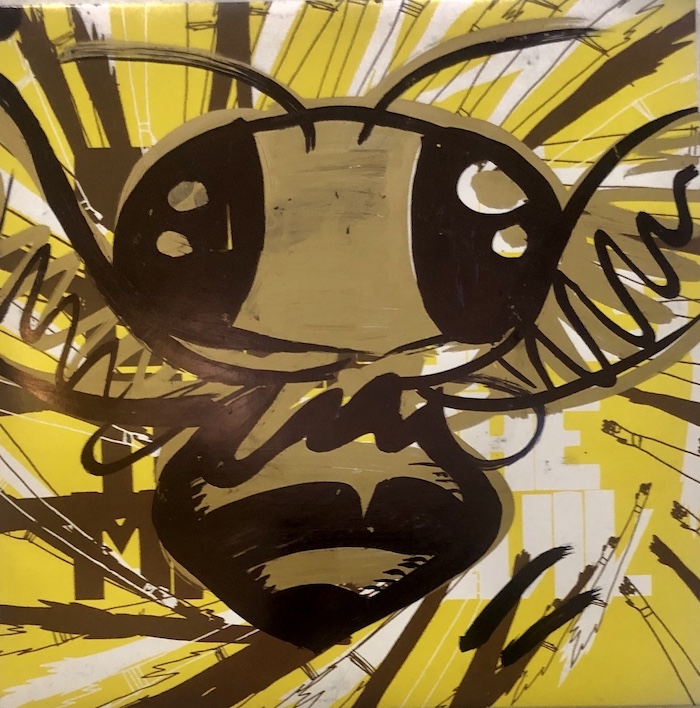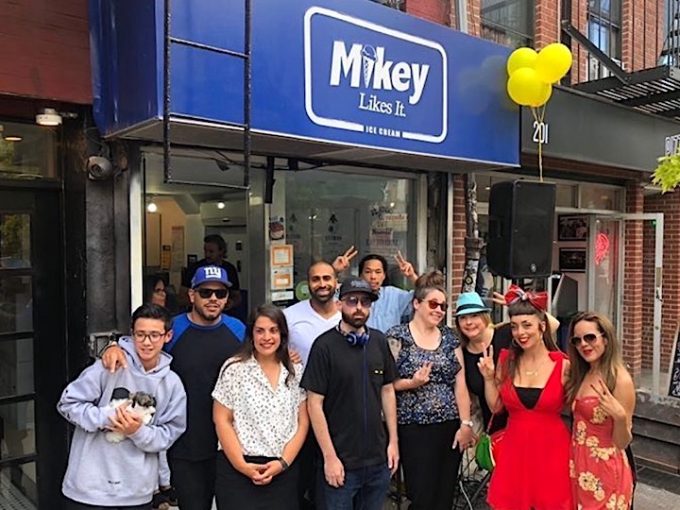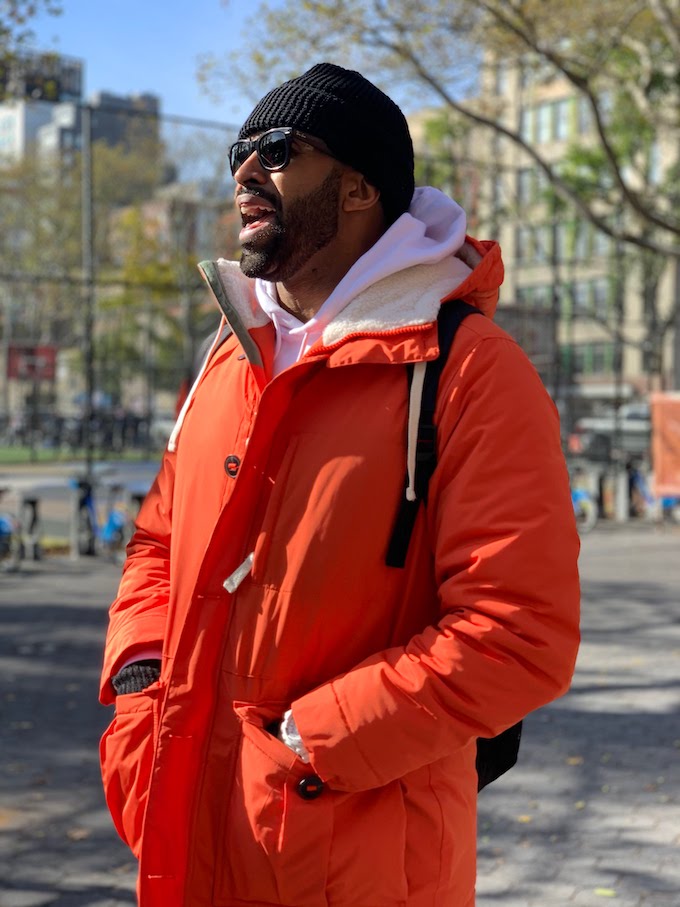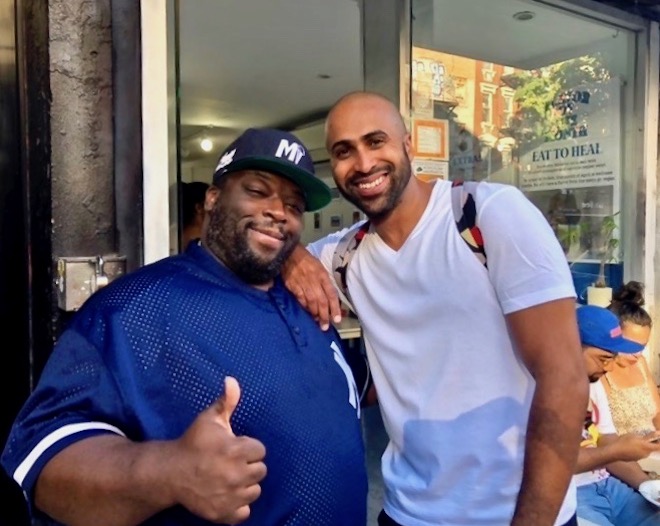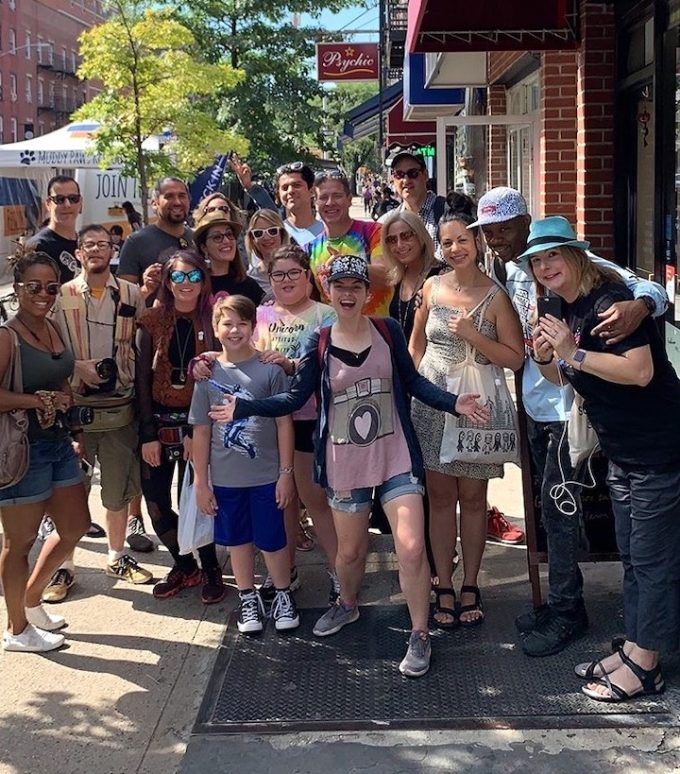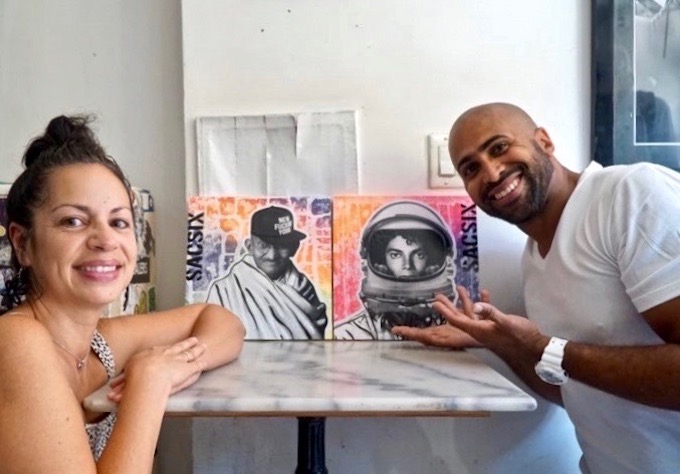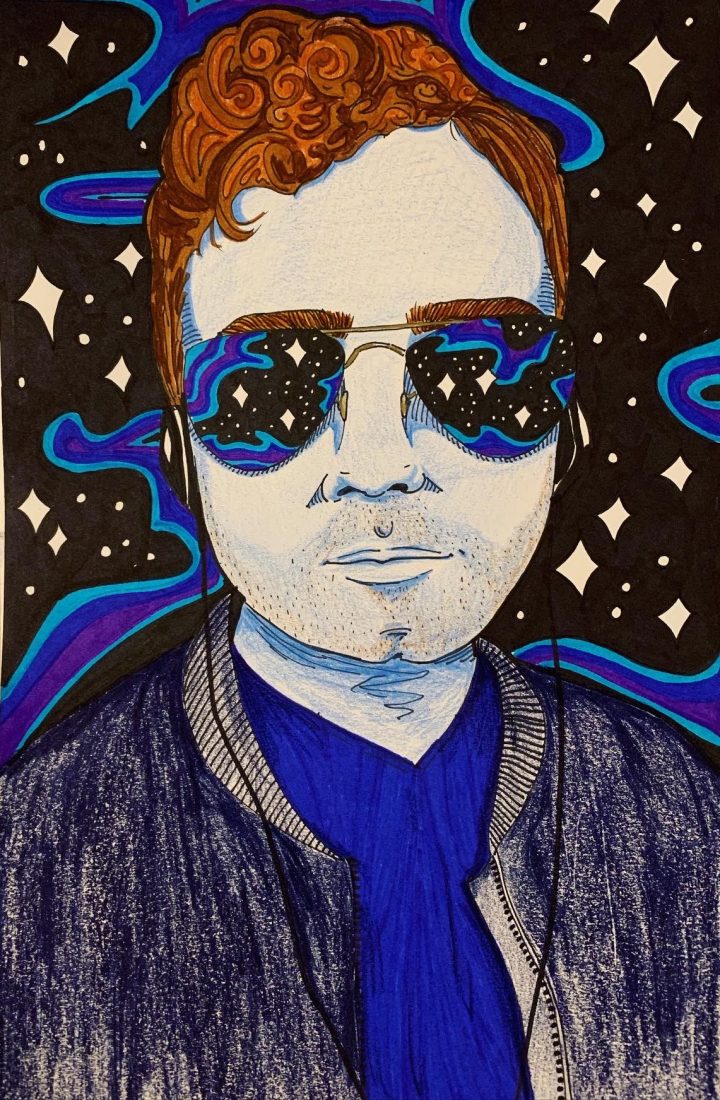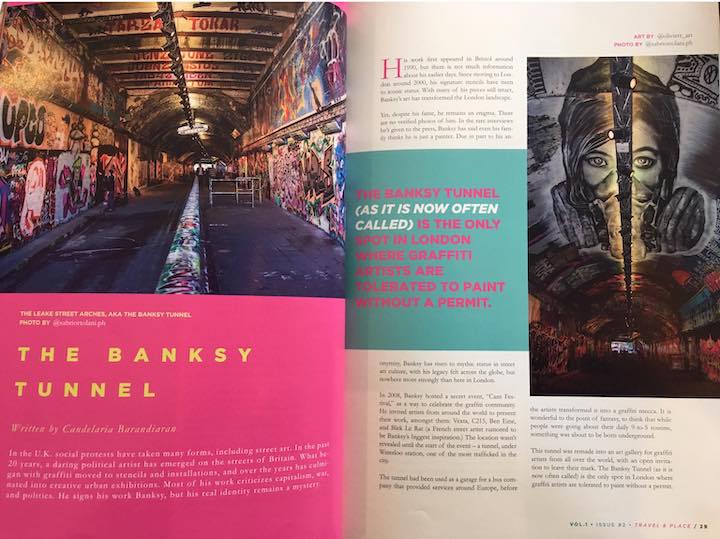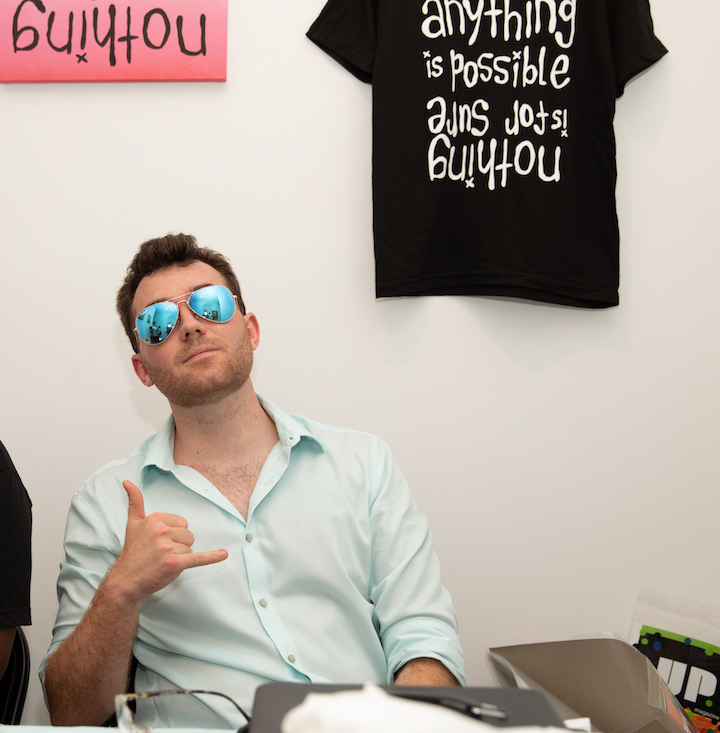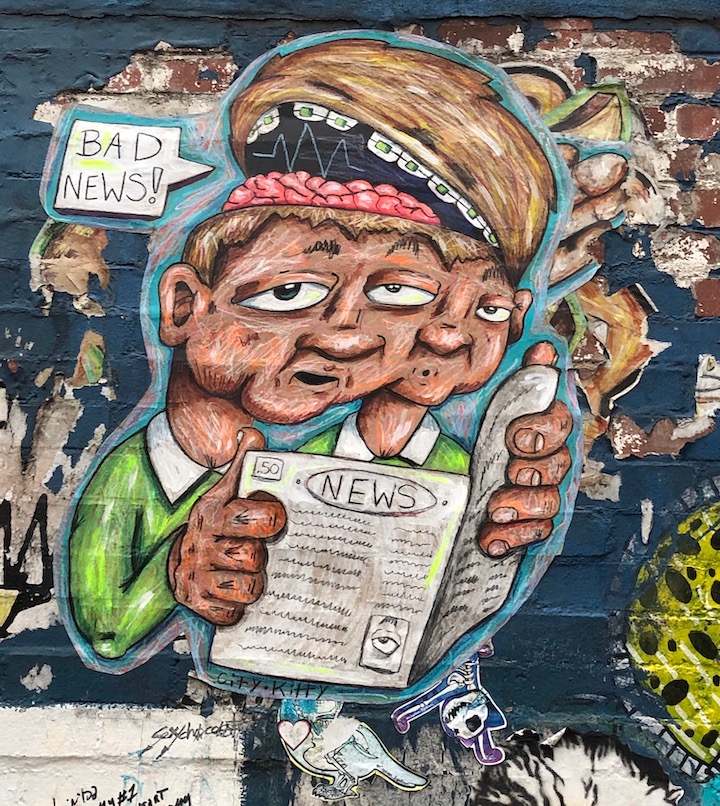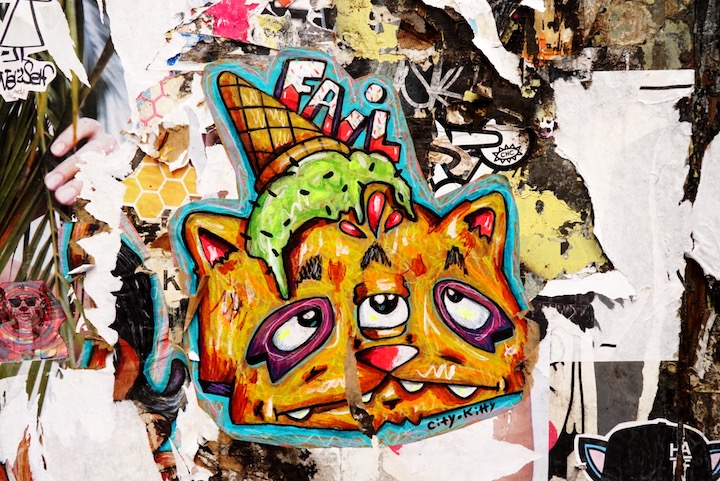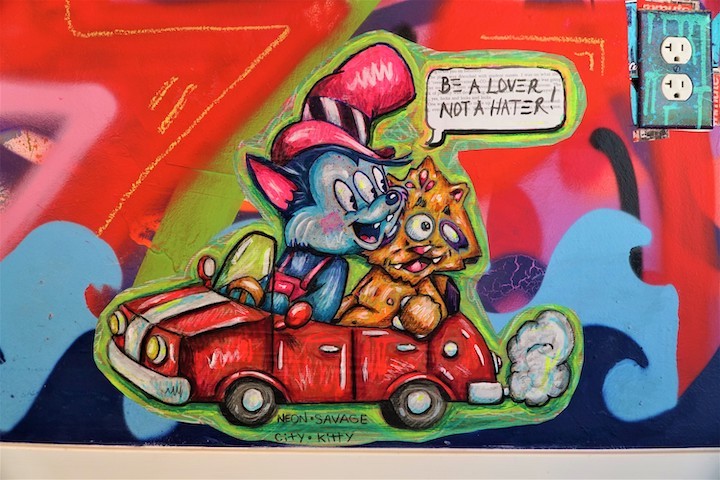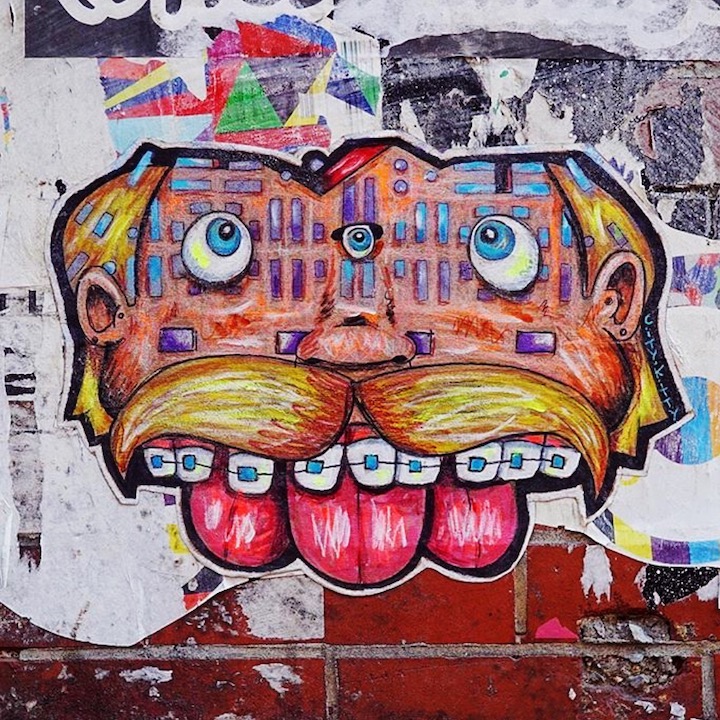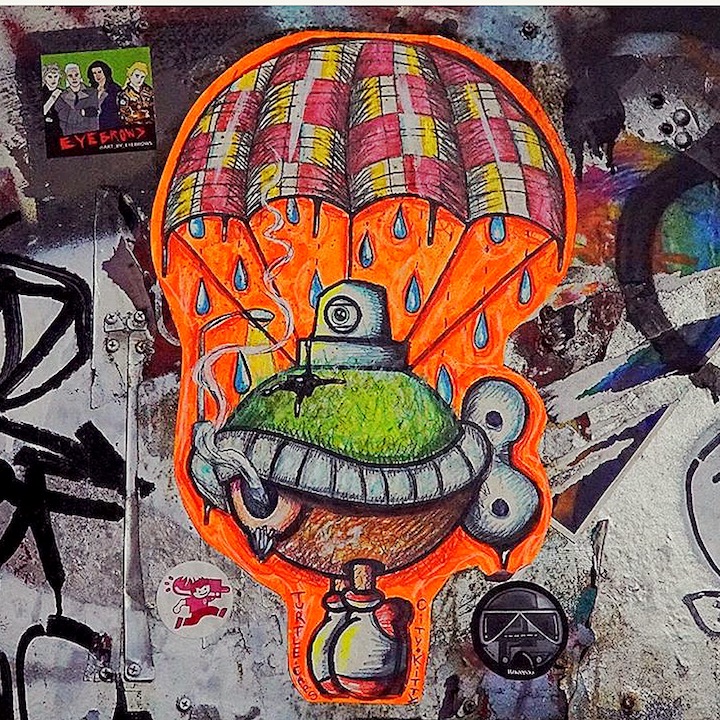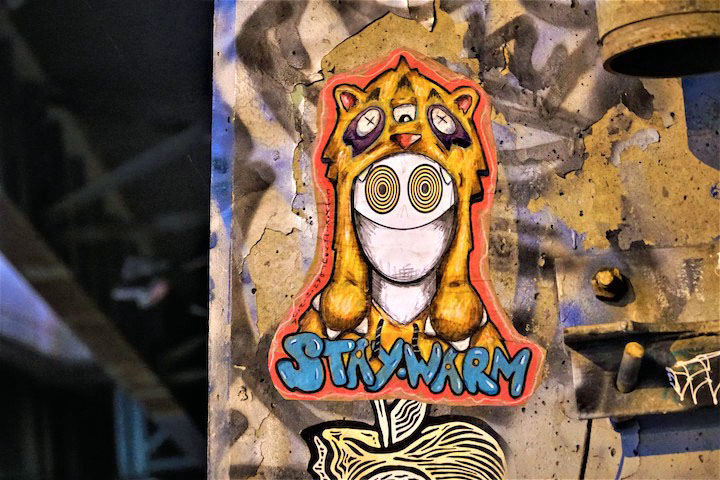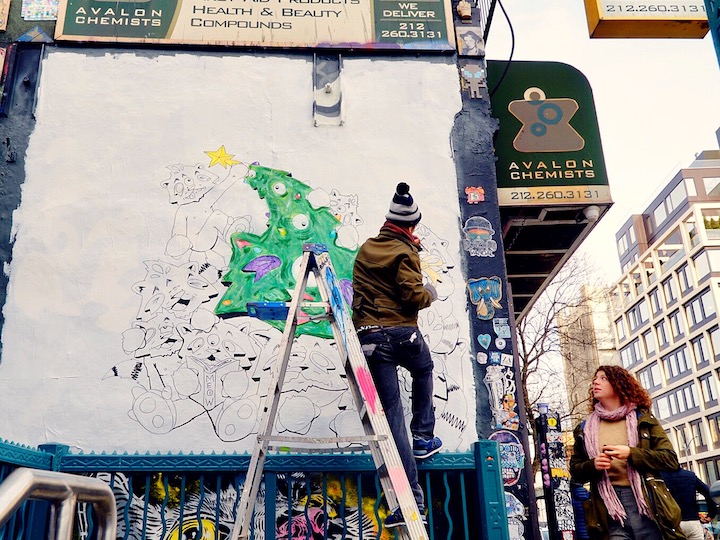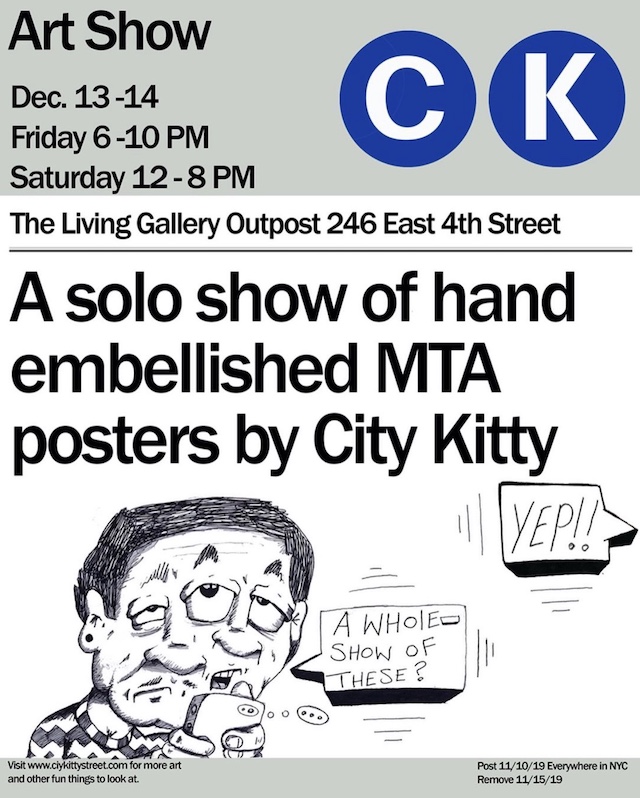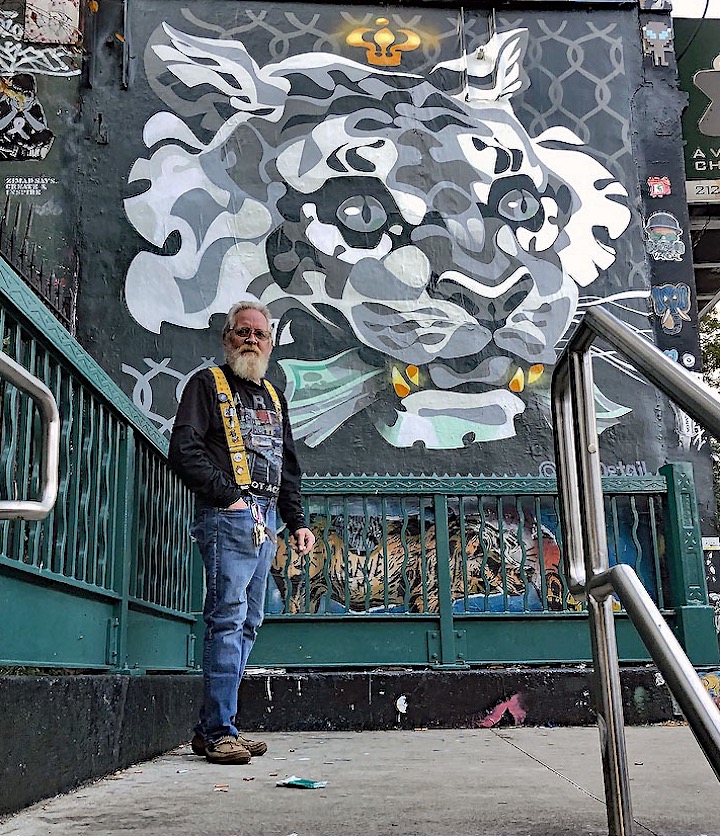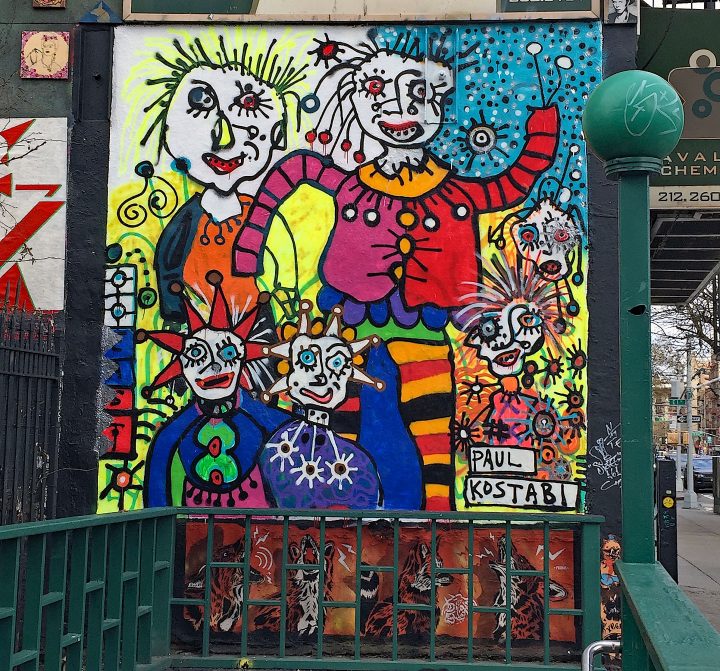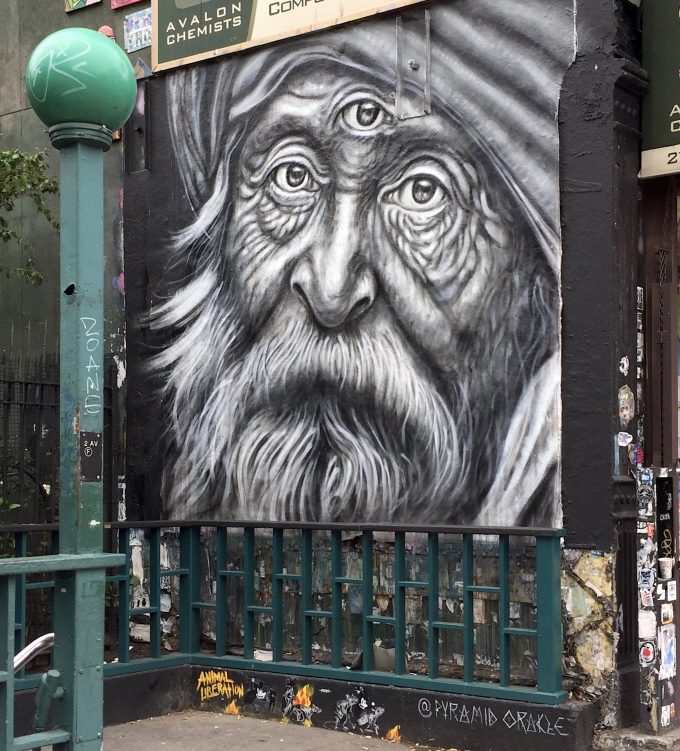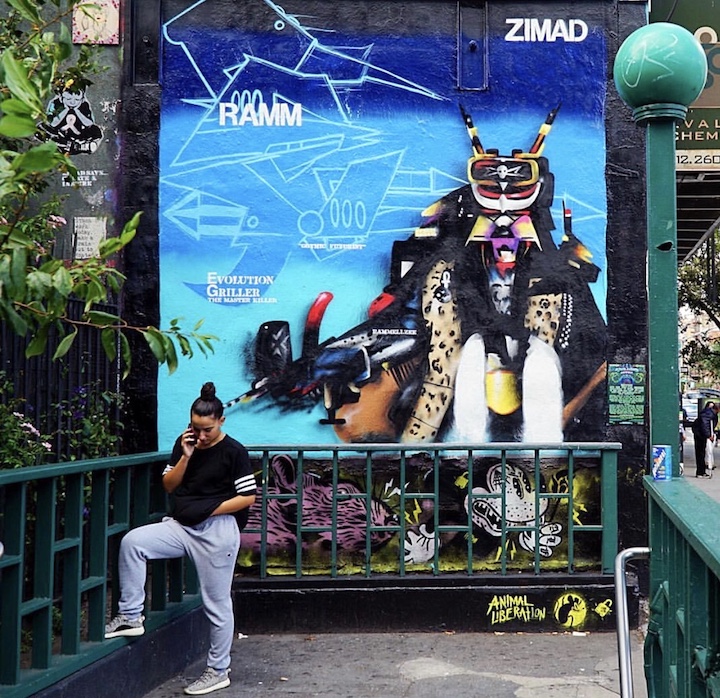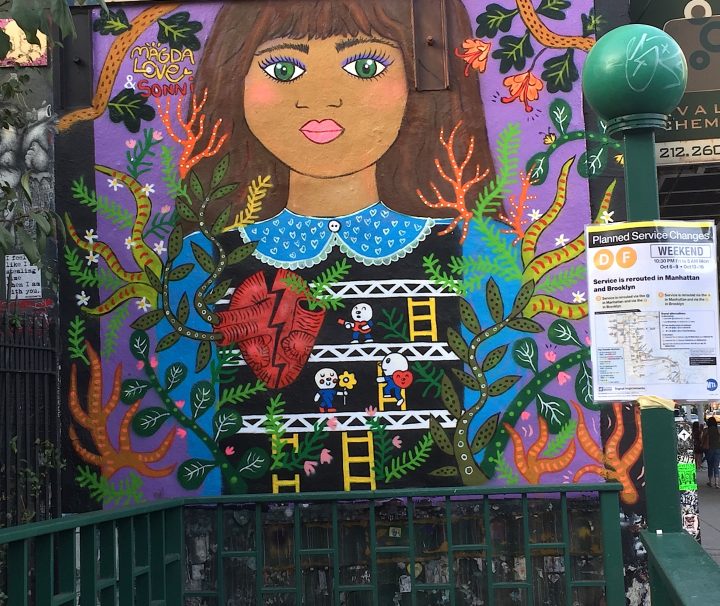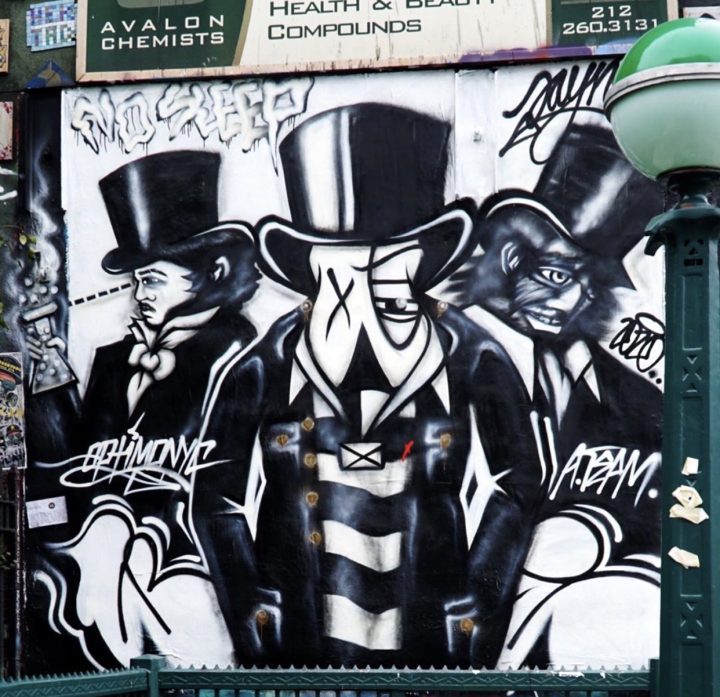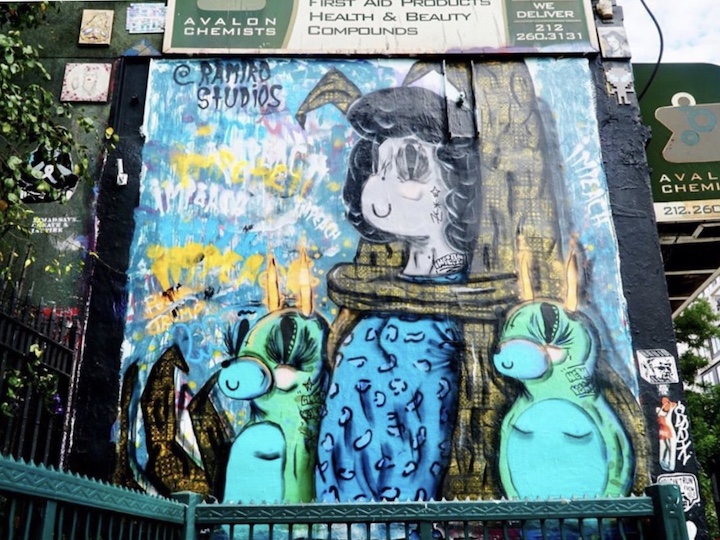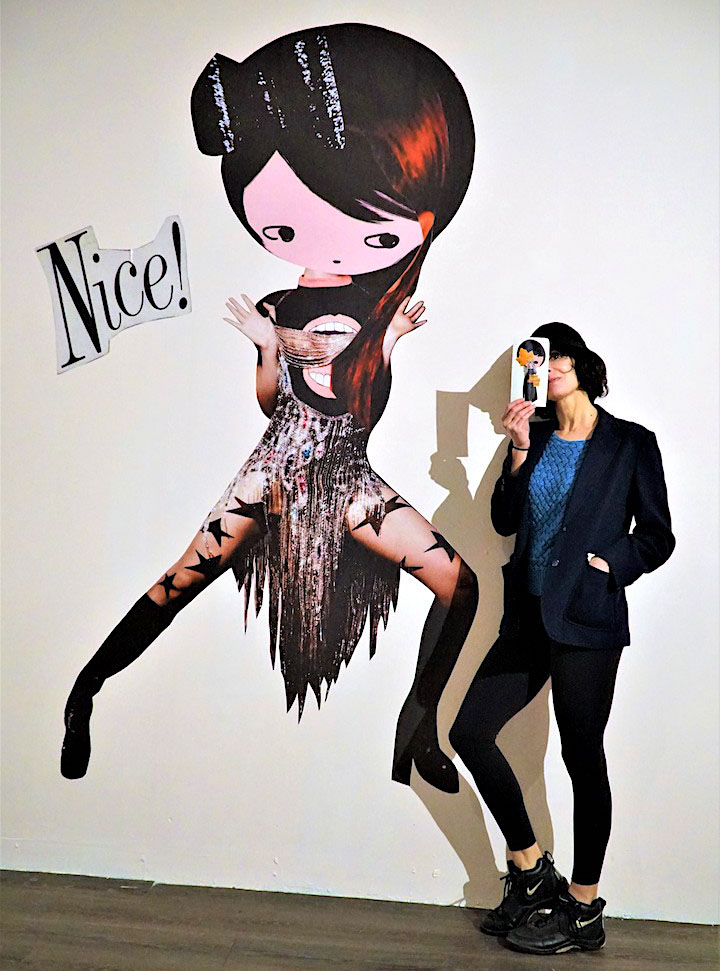
The following post is by Street Art NYC contributor Ana Candelaria
I fell in love with Phoebe New York the moment I saw her on the streets of my city, and I’ve since become obsessed with her! I love everything about her – from her trendy, doll-like figure and her gorgeous outfits to her empowering messages. Recently, I had the honor to speak to her creator, Libby Schoettle.
Can you tell us a bit about your background? Where were you born? Where did you grow up?
I was born in Bryn Mawr, Pennsylvania and raised on a nearby farm. My father was working as an English teacher at the Church Farm School, a boys’ boarding school. And so that’s where I grew up. I was always surrounded by nature. It was amazing… and totally the opposite of New York City!
Do any childhood memories stand out –- particularly those that inform your art?
I remember setting up easels with my brother in our backyard. And my grandfather, an artist who had studied at the Pennsylvania Academy of the Fine Arts, would teach us how to look at something and draw it. I wasn’t particularly good, but I loved the feeling of being outside with markers, easels, pens and colors. My loneliness, along with any sadness that I may have felt at the time, would go away when I had paper and pen in my hand.
My grandfather also took us to his studio on occasion. It was a very special place to him. I still remember the smell and the room. It was very spiritual. I remember thinking, “I could see myself doing this.” I don’t know if I would have the same connection to art if it weren’t for him.
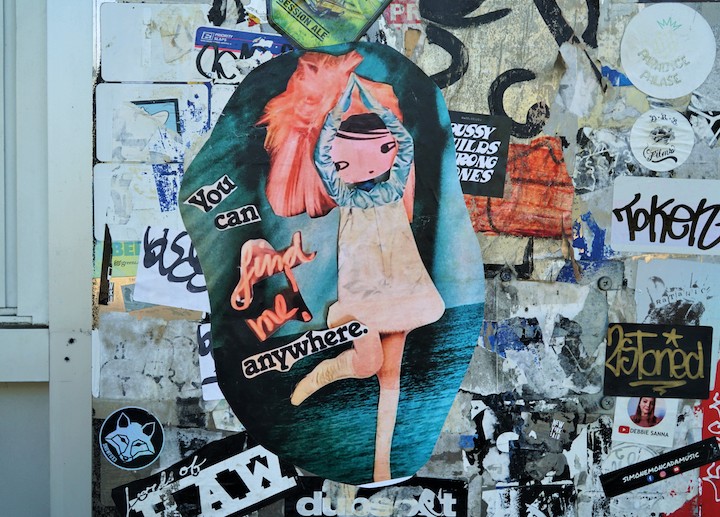
Are there any particular themes in your art that can be traced back to your childhood?
Yes, I was a fearful child. I was petrified of Philadelphia, and I would do anything to avoid going to a city. It’s ironic how I ended up in New York City! Messages in my work like “Fear Nothing” and “Never Quit” stem from my childhood emotions.
At what point did you break through your fear?
It happened gradually between elementary school and high school. I was constantly bullied in elementary school. It was traumatic. I was afraid of everybody. But I had so much to say, and I began telling myself, “I can get through this. It isn’t forever.” And I remember suddenly becoming outgoing!
And when I moved to New York City, I immediately connected with the city. I fell in love with it! It was the relationship I’d been looking for my whole life. I’d lived in a couple of other places, but I’d always felt depressed — and couldn’t figure out why. New York City changed my life. I started to study acting after college, where I’d majored in film production. I wanted to confront my fears through acting. I didn’t really want to become an actress, but that helped me a lot — as did waitressing! I constantly challenged myself.
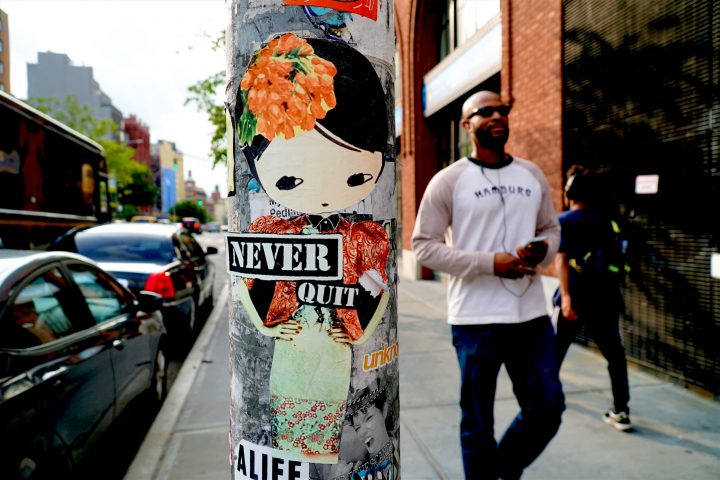
Did you ever study art in a formal setting?
No. I studied film production and fashion in college. I started doing art on my own. I never thought about it. Had I studied art formally, I don’t think any of this would have happened!
What inspired you to create Phoebe? And when was she born?
It took years for Phoebe to evolve. It started in 2001 from a photograph I took while I was in Paris. I don’t know exactly when Phoebe was born, but I do remember how her profile came about. I had a square from a pink record album, and I drew a line for a mouth and an eye on the side. It was subtle, but I saw a face. I thought, “OMG, I could use this instead of making Americana-inspired heads.” I was immersed and obsessed with Phoebe’s side profile for years, and I drew hundreds of them. I placed her on top of line drawings and cut clothing out to dress her. She didn’t have a full face until 2016. Watching her over the years is like watching your child grow.
I had no idea what I was doing, but it feels like it’s what I was supposed to be doing. I think that’s what art is. You can’t really make sense of it; you just trust it.
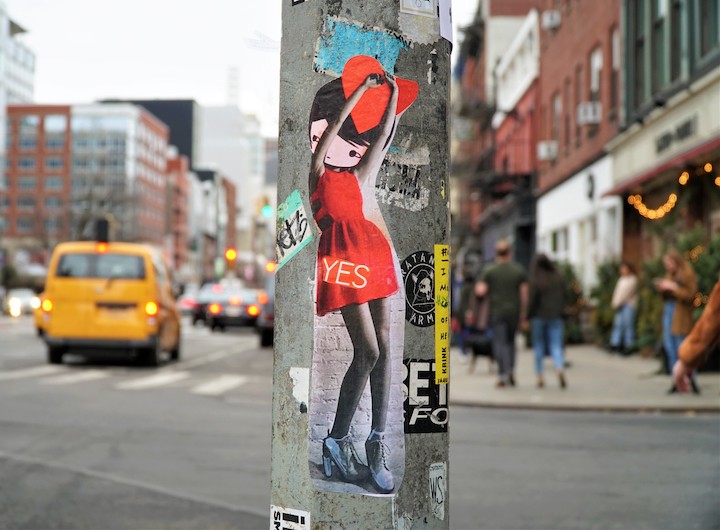
Once Phoebe changed from side to full profile, she became more expressive. Was that your intent?
Yes, it was a major shift in my work. With her full face, I was able to communicate many more emotions and messages. I don’t do her side profile anymore. Rarely do you see it. I now put different colors on top of her eyes and vary the colors of her hair. I’ve become far more experimental. Phoebe has become so much more to me than I could’ve ever imagined.
Have you ever been told that your character resembles you?
Yes, all the time! It’s so funny. It even happens at the post office when I’m delivering packages. I put stickers on the packages that people order and the postal workers say “OMG is that you?” She’s the exact definition of an alter ego. I think that if I had set out with an intention to make one, it never would have happened!
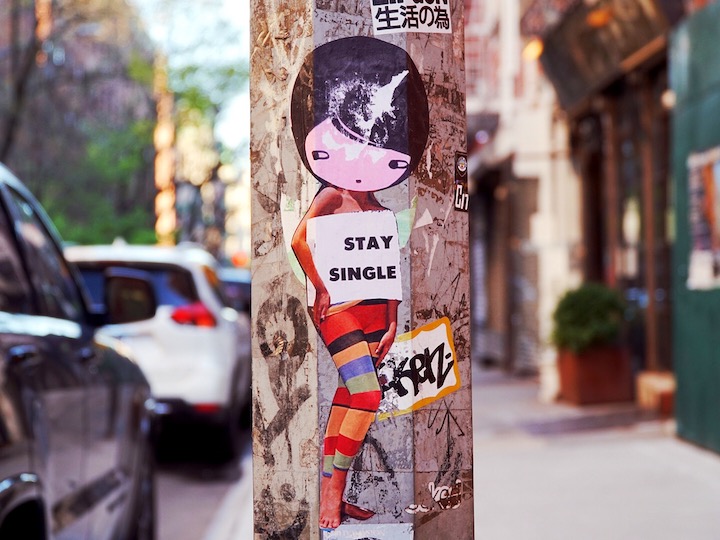
Can you tell us something about your creative process? What is it like?
My process is full-time because I’m constantly looking for inspiration. I’m either at my desk or looking through magazines for things to cut out. The first thing I do in the morning is write. I then walk over to my desk which is my happiest place in the world. Sometimes my creation comes together in seconds, and sometimes it doesn’t. It can get frustrating at times because I can be there for hours and nothing happens. I’ve learned — as a writer and an artist — that you have to put yourself there. You have to show up at your desk and go through the pain to get the good stuff. It’s not going to just happen magically. I dedicate 100% of my time to Phoebe. Sometimes it’s haunting! I could be half asleep at 4:00 am, and I would say, “I have to do this now.”
Are there any particular artists who inspire you? Any favorite artists?
When I firstI created Phoebe, people would compare her to other artists’ works. They would say things like “Oh, you must’ve studied this artist,” or “Surely you’ve been inspired by that artist.” And I would say, “No. I’ve never seen that artist’s work.” Phoebe truly came out of my head.
There are a few artists, though, whose art inspires me personally. Photographers, in particular, inspire me. Among my favorite images are Cindy Sherman’s older works from the 1970’s. Francesca Woodman is, also, one of my favorites. In addition to producing self-portraits, Francesca did a lot of journaling. I’m into reading artists’ journals. I’m interested in their thoughts and how they lived. I also love Tracey Emin, Edvard Munch, Keith Haring, Basquiat and Andy Warhol. And the poet Sylvia Plath is a favorite.
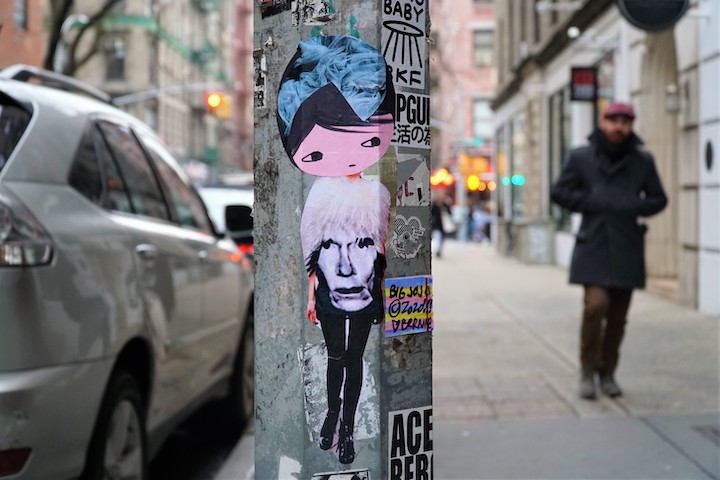
Are there any particularly memorable moments that stand out since the birth of Phoebe?
Maybe the fact that she is here. The memory of bringing her into my life and being able to share her with other people. Getting her out on the streets was particularly special. My first solo show is also distinctly memorable. It was held in 2007 at an Upper East Side gallery, but it was mostly family and friends who attended. Even though it was an amazing experience, I was disappointed that not enough strangers had popped in to check out the work. I still didn’t know back then if a stranger could understand or relate to my work. I didn’t get a sense of what anybody thought about my artwork until I started to put it out on the street. Then I started to receive messages from people across the world who understand and appreciate it.
Of all the Phoebe’s that you’ve created, have you a favorite one?
I have so many from different time periods! There is one I made in 2008 that I will never forget. It’s one that I don’t think I could ever part with. It’s very special because I was in love with this person, and it was the first piece of art that made me realize that I could communicate an exact feeling. Phoebe was sitting on steps looking down with a heart tucked under her arm. It somehow helped me get over that person, as it was something I did for myself and something I could show others.
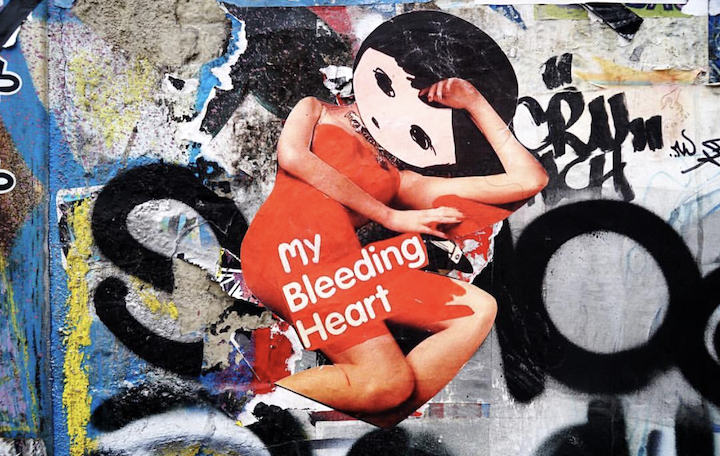
Is there anyone — in particular — with whom you’d like to collaborate?
I don’t really think about collaborations too much. The collaboration that I did with Victoria Beckham was amazing. It felt organic. The characters really spoke to each other. That’s what I look for in a collaboration. Does it make sense in terms of a relationship with Phoebe? I would experiment and try to collaborate again, but it has to be with the right person — someone who is in line with my audience and with me.
Phoebe has also surfaced in recent gallery settings. What has that experience been like?
It’s exciting! It’s a dream to be able to share with others my original art — what I create on paper behind the scenes. It’s so nice to have people come together to celebrate hard work and dedication. That is what art is all about! I love communicating both on and off the streets. Anything on the streets may suddenly vanish, but work shown indoors continues to live.
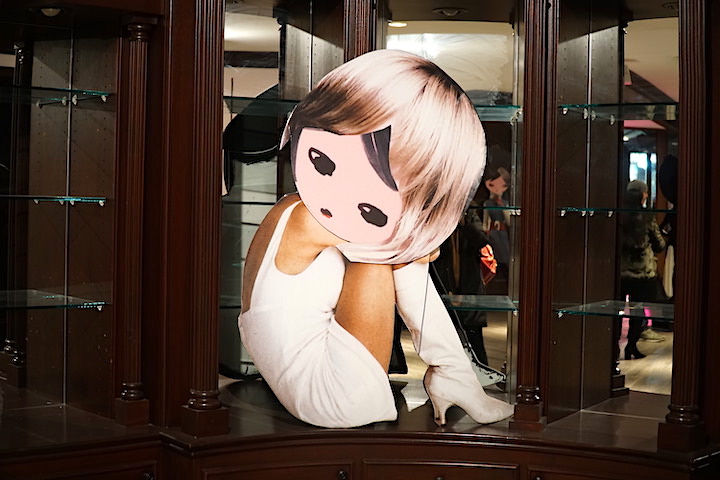
What’s ahead?
I just presented the Off The Walls Bon Voyage installation show with Wallplay Network at the South Street Seaport. This was to be followed by my first solo museum show in Copenhagen, Denmark. I had been working on it for the past year, and it was scheduled to open on May 16th. As it was postponed due to the Covid-19 pandemic, it is now scheduled to open in the fall. All of my original work since 2001 has already been shipped, and I am very excited to be showing in a museum.
There is also a documentary in the works, in which the director, Jyll Johnstone of Canobie Films, animates Phoebe. She has been working on the film for five years — following me around everywhere I go and documenting just about everything I do. She is hoping to have the first segment of the series — one of five — completed later this year or in early 2021.
That’s very exciting. Can you tell us a bit more about the upcoming film?
Yes. It explores my life as an artist. The film begins before I had a presence on the streets. I wasn’t a street artist at the time. I was a writer and a collage artist. I didn’t have a cell phone or instagram. It’s amazing how everything has since evolved organically — including this documentation! The film will offer viewers insights into my many different sides.
I’m certainly looking forward to it. Have you anything else in the works?
Yes! I am also working on a book of my collages now.
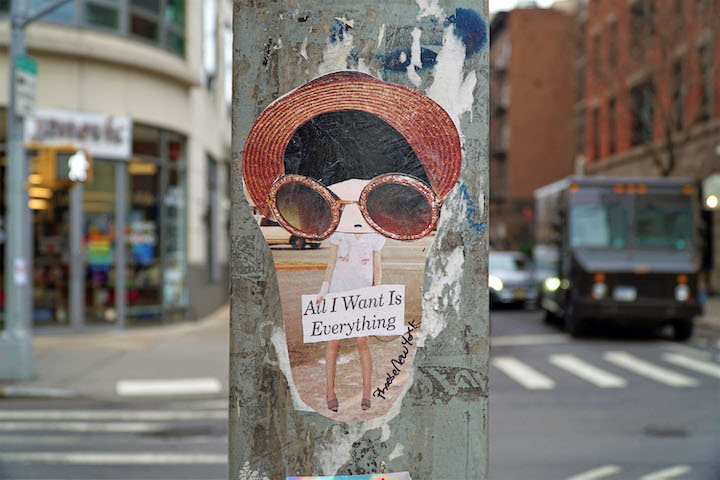
How exciting! Good luck with it all! And thank you for inspiring me in so many ways.
Interview conducted by Ana Candelaria and edited by Lois Stavsky
Photos: Ana Candelaria
